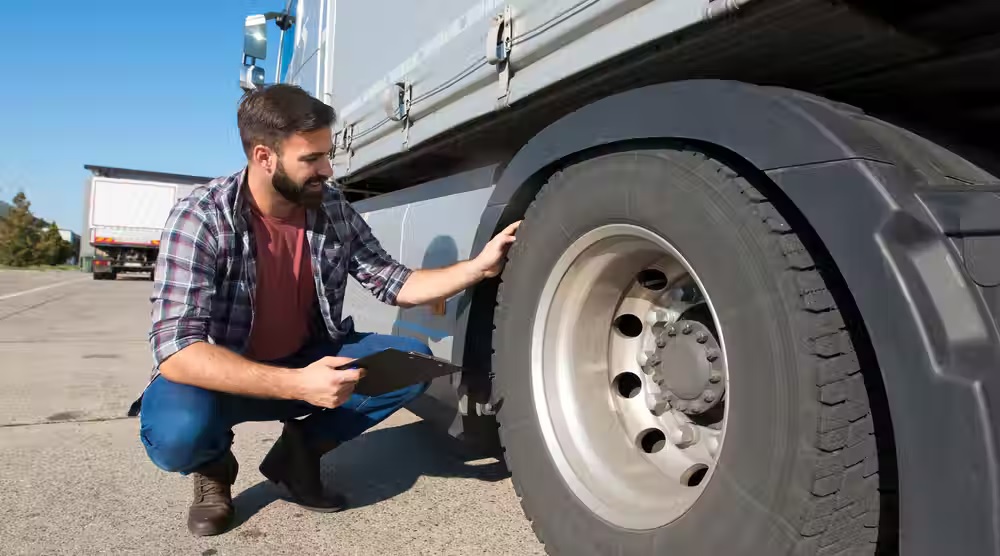With rising fuel and tire prices, supply issues in popular sizes, and availability in general as the main issues for truck tire purchasers, getting the most out of every casing is critical.
Inflation is impossible to ignore. The effects are being felt in every channel of the supply chain with only the hope of relief starting in 2023. Most experts agree that the rest of this year is going to be a challenge for every business regardless of size or market segment. For the operators of commercial motor vehicles, the now daily reminders of higher fuel and tire costs should be enough to consider the benefits of monitoring the inflation pressure in truck tires.
Before jumping on the tire pressure monitoring system (TPMS) bandwagon, it’s important to remember that sensors are assets. It doesn’t matter if it’s part of the valve stem or the axle end because it requires attention to protect the investment. If the TPMS is linked to telematics, then the attention level mandates a higher degree of commitment because spending the money to collect data that’s never used is a waste of money. The pinnacle of TPMS and telematics is reached when every possible step is taken to avoid a preventable on-the-road failure before, during, and after operation.
Proper inflation pressure in a truck tire is generally not an issue when drivers use a gauge on every tire during the pre-trip inspection. “Thumping” will find the obvious flat tire, but it cannot identify situations where the tire is underinflated enough to build the levels of heat that result in separations but doesn’t sound flat. When every vehicle leaves the terminal or garage with the correct air pressure at the beginning of the shift, the occasional puncture or road hazard is still going to result in the occasional need for emergency road service; however, most pressure- and heat-related problems on the side of the road can be avoided.
In reality, the “thump” is still more effective than a kick, which is only marginally better than a visual check. The majority of tractors, especially trailers, operating with underinflated tires are not properly checked prior to each day’s use. TPMS is definitely the best solution to the problem because it requires a lot less effort. Whether it’s direct or part of the compressed air system on the trailer, the fact that the tire pressure is being independently monitored and/or adjusted is going to reduce problems, which have a direct impact on the bottom line.
With rising prices, supply issues in popular sizes, and availability in general as the main issues for truck tire purchasers, getting the most out of every casing is critical. Retreading has measurable advantages because most of the production cost for a truck tire goes into building the casing. When every casing asset is maximized for multiple retreads, there are direct benefits related to the cost-per-mile for tires and fuel. If ever there was a time to squeeze every mile out of every tire and retread, it’s right now. Without TPMS, that is a more difficult task.
But TPMS alone can’t solve inflation problems any more than torque wrenches can solve wheel-off problems. Drivers can ignore TPMS lights on the instrument panel just like they ignore torque checks, so there is an accountability factor that must be addressed. Combining TPMS with telematics gives the carrier a higher level of control when it comes to monitoring and maintaining tire inflation pressure. At the highest level, it can determine the roadworthiness of the tractor or trailer before it’s put into service with no physical effort on the part of the driver.
As I write this column, oil is around $90 a barrel, and fuel is averaging $3.835 a gallon. The double-digit price increases from tire manufacturers keep coming. At the same time, the world’s largest floating parking lot continues to exist outside the ports of Los Angeles and Long Beach because there’s no room for containers and a shortage of drivers. All of these factors impact tire prices and availability, so I’m fairly confident that these trends will not show any signs of improvement by the time this issue goes to print.
Commercial motor vehicles do not operate without tires and fuel. Inflation pressure maintenance plays a pivotal role in the cost per mile for both, so leveraging technology to maximize and protect casing assets will help control those costs. The pandemic has taught us that business as usual is not a viable option. TPMS and telematics are the solutions to an age-old problem that used to be accepted as the cost of doing business. Those days are gone.
Kevin Rohlwing is the SVP of training for the Tire Industry Association. He has more than 40 years of experience in the tire industry and has created programs to help train more than 180,000 technicians.
This article originally appeared in FleetOwner.com.
Source: https://www.fleetmaintenance.com/





